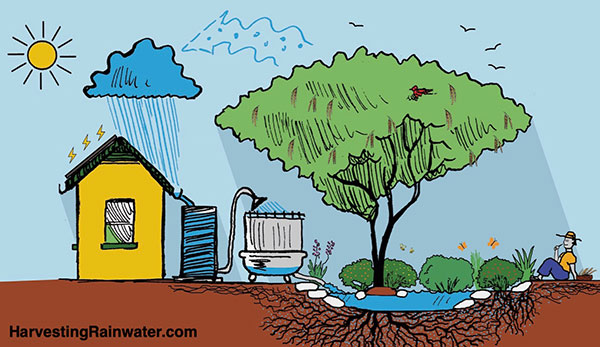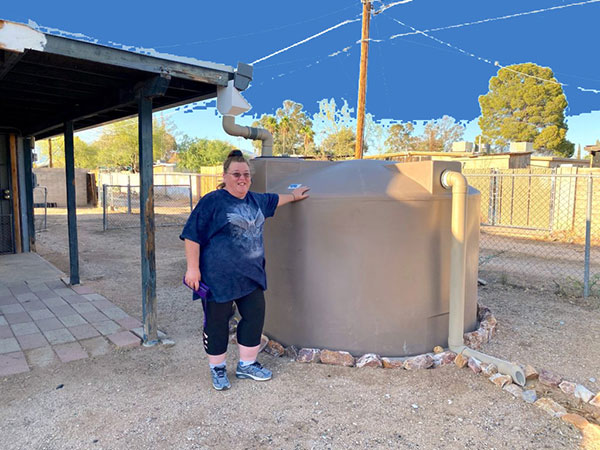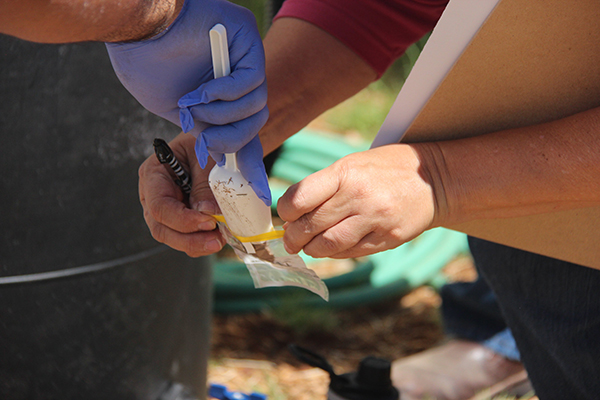Communities Building a Sustainable Future: A Spotlight on Rainwater Harvesting
Headlines splashed across media outlets—print, online, and television—often have the effect of highlighting our political divisions. But as polling conducted by the Gallup Organization for Center for the Future of Arizona (CFA) continues to show, so many issues in our state unite us rather than divide us.
"...rainfall can help reduce the urban heat island when it’s utilized to increase the presence of plants and trees."
One category that highlights agreement in The Arizona We Want survey is the environment, particularly the goal of protecting our natural resources and water supply. Organizations in southern Arizona have taken an important step in that direction by adopting rainwater harvesting and using it as a way of efficiently capturing precipitation. They’re finding that seizing rainfall can help reduce the urban heat island when it’s utilized to increase the presence of plants and trees.

The Sonora Environment Research Institute (SERI) has experienced success in this realm. With 1.2 trillion dollars available for transportation and infrastructure from the 2021 Infrastructure Investment and Jobs Act (IIJA), SERI applied for funding from the Bureau of Reclamation’s WaterSMART program—a component of IIJA.
SERI received a $40,000 grant to expand a rainwater harvesting program that it started nearly a decade ago. Flor Sandoval, SERI Program Director, explains its origins.
“At the beginning, we were offering our participants to pay all the upfront costs for the rainwater harvesting installations, and then we were filing all the rebates for Tucson Water, and we were giving them a $450 grant to cover the rainwater harvesting costs,” Sandoval says. “And if there was any remaining balance after that, they were given a zero percent interest loan that was carried by us to be able to acquire these systems. The first year, we did 17 installations, and we were able to finalize the program, come out with a plan, and after that, we began working with the city of Tucson more closely.”

Sandoval adds that SERI has completed more than 300 installations since the program began. But the cost has gone up, so the WaterSMART grant arrived just in time.
“So with this new grant funding we have, we’re able to get to more families. We’re offering an additional 800 dollars to the families to acquire the 1,500-gallon rainwater harvesting tanks,” Sandoval continues. “So it reflects in more installations because families are getting lower loans or were able to cover all of the costs again; thanks to these wonderful funding opportunities, we had to give the families more resources to be able to acquire these systems.”
Sandoval stresses the value the funds have provided and how they’ve expanded rainwater harvesting for lower-income residents in Tucson.
“It’s $40,000 that we’re going to be able to help 50 families acquire rainwater harvesting systems in their homes that otherwise would not be able to afford or install a rainwater harvesting system.”
"...rainwater is bringing more vegetation to the outdoors, it’s providing something practical indoors as well—helping families conserve their potable water."
And as that rainwater is bringing more vegetation to the outdoors, it’s providing something practical indoors as well—helping families conserve their potable water.
Increased rainwater harvesting is assisting lower-income communities, and there is optimism that it may be a method for bridging gaps between distant neighborhoods. Catlow Shipek is with Watershed Management Group in Tucson.
“The cool thing is that rain touches us all. It lands on our roofs. It lands in our yards. It lands in our streets. And we have control over that. Do we make use of that, or do we have it be a problem?”
A term Shipek enthusiastically uses and attaches to growth in rainwater harvesting is connection—on multiple levels.
“I want to make that water have it be utilized for its highest and best purpose.’ Is it drinking water? Is it to shower and bathe with? Is it to grow vegetables with? Is it to grow that native shade tree?” Shipek says. “Everybody has their own highest and best purpose for that small amount of rainwater supply. But then they see on the supply side and the demand side, which helps connect them to the cycles, the seasonality, the year-to-year differences.”
An offshoot of rainwater harvesting is one that is also meant to brighten up neighborhoods with greenspace—stormwater parks. Pima County has implemented several of them since 2019. Jacob Prietto is a hydrologist with the Pima County Regional Flood Control District. As he explains, stormwater parks are medium-sized projects that are also making productive use of precipitation. The specific objective differs a bit from rainwater harvesting, but it’s also a way to improve the quality of life in lower-income areas.
“Simply increasing tree canopy in neighborhoods that don’t have tree canopy and providing green spaces for our community to have an experience…There’s a mobile home park where they may not have opportunities to enjoy large, green outdoor spaces. And that’s what we’re trying to provide.”

Tucson and Pima County have been ahead of the curve in making productive use of the 11 inches of annual rainfall in the region. Flor Sandoval of SERI reiterates the positive impact of the WaterSMART federal grant and is hopeful of doing more soon.
“For our rainwater harvesting program, right now, it’s primarily with Tucson Water customers due to the nature of the other funding. But if we’re able to get more additional funding from other sources, we might be able to expand to other water companies in Tucson.”
Though $40,000 seems like a drop in the bucket when billions are available, local organizations and communities can make a big difference in the lives of residents across Arizona by simply expanding upon the great things they’re doing through the use of available funding from federal infrastructure investments. Through more projects like these, our communities and leaders can help Arizonans realize the vibrant, prosperous, and sustainable quality of life that we all want.
